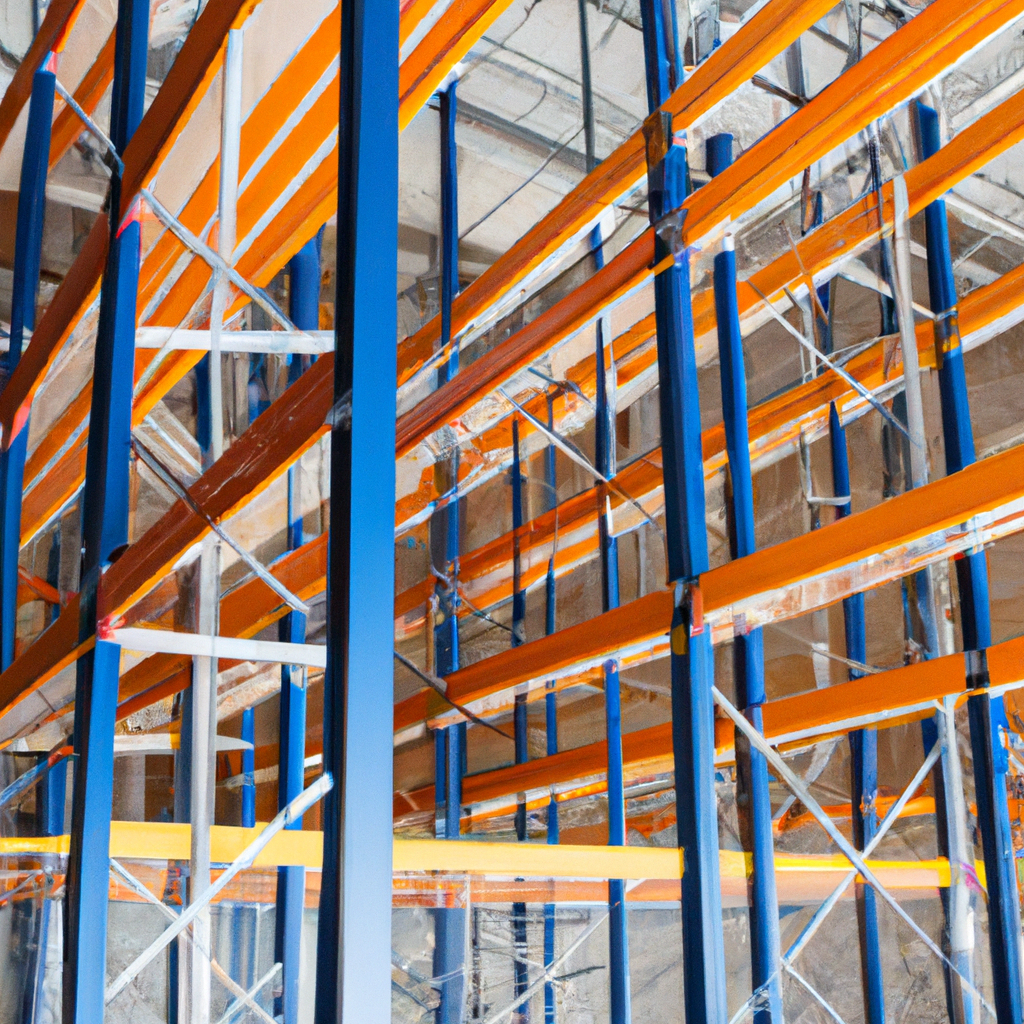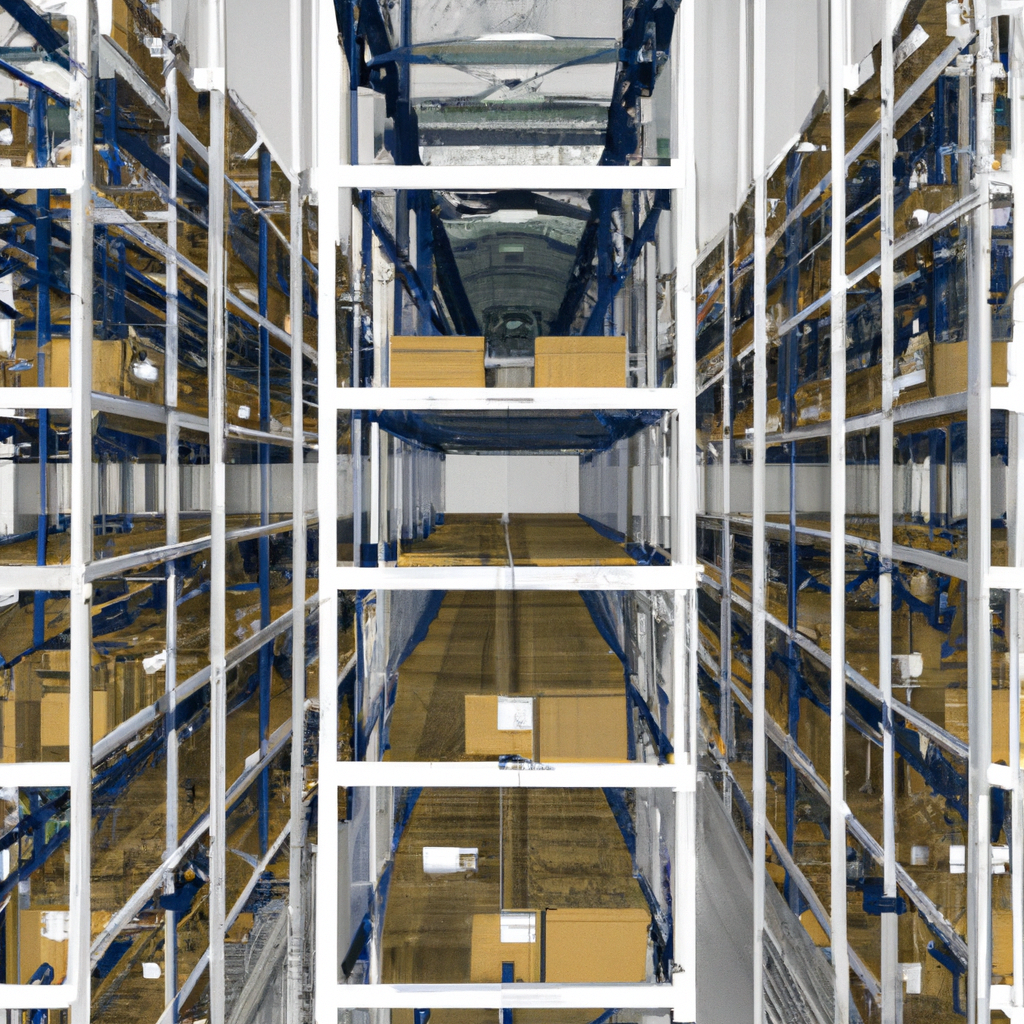In the fast-paced world of business, maximizing space and efficiency in warehouses is crucial to meet growing demands and maintaining a competitive edge. One effective way to achieve this is by implementing efficient warehouse shelving systems. This comprehensive guide will explore the importance of warehouse shelving systems, discuss various types available, highlight factors to consider when choosing the right system, delve into the benefits they offer, and provide steps to optimize their use.

Importance of Warehouse Shelving Systems
Warehouse shelving systems play a vital role in optimizing storage space and facilitating smooth operations. By utilizing the available vertical space, these systems enable businesses to store more inventory without expanding their physical footprint. Efficient shelving systems also enhance accessibility and organization, allowing for streamlined inventory management and improved workflow efficiency.
Types of Warehouse Shelving Systems
1. Pallet Racking Systems
Pallet racking systems are among the most commonly used shelving systems in warehouses. They provide efficient storage for palletized goods and come in various configurations, including selective pallet racking, double deep racking, and drive-in racking.
- Selective Pallet Racking: This system allows easy access to individual pallets and is suitable for warehouses with high product turnover. It offers excellent selectivity and versatility, making it ideal for storing different product types.
- Double Deep Racking: Double deep racking involves storing two pallets deep, one behind the other. It maximizes storage density while sacrificing some selectivity. This system is suitable for warehouses with a larger quantity of each product.
- Drive-in Racking: Drive-in racking is designed for high-density storage where selectivity is not a priority. Pallets are stored on rails that allow forklifts to enter the rack structure and retrieve or store pallets. It is best suited for warehouses with a large volume of homogeneous products.
2. Cantilever Racking Systems
Cantilever racking systems are primarily used for storing long and bulky items such as pipes, timber, and metal sheets. They feature long arms that extend from vertical columns, allowing easy loading and unloading of items. Cantilever racking systems offer great versatility and accessibility for irregularly shaped inventory.
3. Mezzanine Shelving Systems
Mezzanine shelving systems utilize the vertical space above the warehouse floor by creating intermediate levels or platforms. These systems are useful for expanding storage capacity without the need for extensive construction or moving to a larger facility. Mezzanine shelving systems are commonly used for storing lightweight items, offices, or creating additional workspaces within the warehouse.
Factors to Consider when Choosing Warehouse Shelving Systems
Choosing the right warehouse shelving system requires careful consideration of various factors to ensure it meets the specific needs of your business.
- Storage Capacity and Load Requirements: Assess the amount and type of inventory you need to store. Consider factors such as weight, dimensions, and future growth to determine the required storage capacity and load-bearing capacity of the shelving system.
- Accessibility and Flexibility: Evaluate the accessibility requirements of your inventory. Determine whether you need frequent and easy access to all items or if certain products can be stored in less accessible areas. Consider the flexibility of the shelving system to adapt to changing inventory needs.
- Safety and Security: Prioritize the safety of your employees and inventory. Ensure the shelving system is designed to withstand the weight and size of your products and complies with safety regulations. Implement additional security measures such as locks, cameras, and alarms to protect valuable items.
- Cost-effectiveness: Consider the cost implications of the shelving system, including installation, maintenance, and potential future expansions. Compare different options and choose a system that provides the best balance between cost and value.
Benefits of Efficient Warehouse Shelving Systems
Implementing efficient warehouse shelving systems offers several benefits that directly impact the overall performance of your warehouse operations.
- Maximizing Space Utilization: Warehouse shelving systems utilize vertical space, allowing you to store more inventory within the same physical footprint. This maximization of space results in increased storage capacity and cost savings.
- Streamlining Inventory Management: With well-organized shelving systems, inventory management becomes more efficient. Items are easily accessible, reducing the time spent searching for specific products. Proper labeling and organization also minimize errors and improve order accuracy.
- Increasing Operational Efficiency: Warehouse shelving systems optimize workflow by enabling smooth movement and quick access to products. This improves productivity and reduces labor costs associated with inventory handling and order fulfillment.
- Enhancing Workplace Safety: A properly designed and installed shelving system enhances safety in the warehouse. It prevents inventory from becoming a hazard and minimizes the risk of accidents caused by improperly stored items. By maintaining a safe working environment, you protect your employees and reduce the likelihood of workplace injuries.
Steps to Optimize Warehouse Shelving Systems
To maximize the benefits of your warehouse shelving systems, consider implementing the following steps:
- Assessing Storage Needs and Inventory: Conduct a thorough analysis of your inventory to determine the types of shelving systems required and the optimal storage layout. Consider the size, weight, and quantity of items to ensure the shelving system can accommodate them effectively.
- Planning Layout and Shelving Configuration: Develop a well-thought-out plan for the placement of shelving units. Consider factors such as traffic flow, accessibility, and product categorization. Optimize the layout to minimize unnecessary movement and maximize storage density.
- Implementing Proper Organization and Labeling: Clearly label each shelving unit and organize inventory in a logical and systematic manner. Utilize labeling systems, barcode scanners, and inventory management software to streamline picking, restocking, and inventory tracking processes.
- Utilizing Technology and Automation: Explore automation options such as conveyor systems, robotic picking, and inventory management software. These technologies can further optimize the efficiency of your warehouse shelving systems by reducing manual labor, improving accuracy, and increasing overall productivity.
- Regular Maintenance and Optimization: Schedule regular maintenance checks and inspections to ensure the stability and safety of your shelving systems. Regularly review and optimize the shelving configuration based on changing inventory needs and operational requirements.
Conclusion
Efficient warehouse shelving systems are essential for maximizing space utilization, improving operational efficiency, and streamlining inventory management. By carefully selecting the right shelving system, considering key factors, and following the steps to optimize its use, businesses can create a well-organized and productive warehouse environment. Implementing these strategies not only enhances space and efficiency but also contributes to the overall success of the business.

